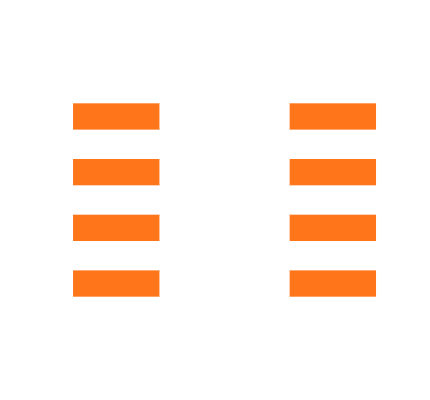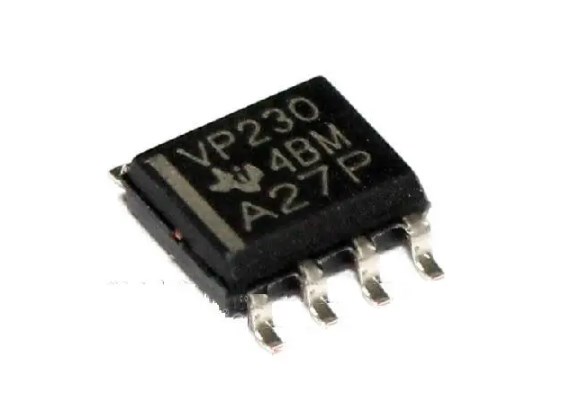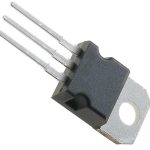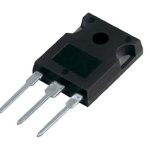SN65HVD230 is a versatile and reliable CAN (Controller Area Network) transceiver that plays a crucial role in enabling communication within automotive, industrial, and other applications. In this article, we will explore the SN65HVD230 CAN board, providing you with all the essential knowledge you need to understand and utilize this powerful component.
What is SN65HVD230?
SN65HVD230 is an integrated circuit (IC) designed as a CAN transceiver. It serves as an interface between a microcontroller or other devices and the physical CAN bus. CAN is a widely used communication protocol in automotive and industrial applications for transmitting data reliably and efficiently.
The SN65HVD230 is a robust and reliable transceiver that supports communication speeds up to 1 Mbps. It provides features such as bus fault protection, thermal shutdown, and a wide common-mode voltage range, making it suitable for various applications where CAN communication is required.
SN65HVD230 Arduino Example
When using the SN65HVD230 with Arduino or any other microcontroller, you can follow specific examples or libraries to interface with the IC. While there isn’t a dedicated Arduino library for the SN65HVD230, you can use existing CAN libraries that support the MCP2515 controller and modify them to work with the SN65HVD230.
-
For example, the Seeed Studio CAN-BUS Shield for Arduino is compatible with the MCP2515 controller, and you can adapt its library to work with the SN65HVD230. By connecting the SN65HVD230 to the appropriate pins on your Arduino board and modifying the library code to reflect the pin configurations, you can establish CAN communication through the SN65HVD230.
It’s important to consult the datasheet of the SN65HVD230 and refer to the specific pin configurations and electrical characteristics while adapting the library or writing your own code.
SN65HVD230 Problem
While the SN65HVD230 is generally a reliable transceiver, like any complex electronic component, it may encounter certain issues. Here are some common problems that can arise with the SN65HVD230 and potential solutions:
- Bus Faults: Bus faults can occur due to improper wiring or excessive noise on the CAN bus. Ensure correct termination resistors are used, address any electrical noise, and verify the proper wiring connections between the transceiver and other devices on the bus.
- Overheating: The SN65HVD230 has built-in thermal shutdown protection to prevent overheating. If the IC gets too hot during operation, check for any shorts or overvoltage conditions on the bus, improper power supply levels, or inadequate heat dissipation. Address these issues to prevent excessive heating.
- Data Corruption: Data corruption can happen if there are timing issues, improper signal levels, or incorrect bit rates. Ensure you have set the appropriate timing parameters, proper voltage levels (including common-mode voltage), and accurate bit rate configuration.
- Compatibility Issues: Some compatibility issues may arise if the SN65HVD230 is used with different microcontrollers, libraries, or configurations. Double-check pin mappings, voltage levels, and library modifications required to adapt the IC to your specific setup.
If you encounter any specific problems with the SN65HVD230, it’s crucial to consult the datasheet, seek support from the manufacturer, and verify your circuit design and software implementation to troubleshoot and resolve the issues effectively.
Comparison
SN65HVD230 vs MCP2515
The SN65HVD230 and MCP2515 are two different ICs that serve different purposes in a CAN network.
- The SN65HVD230 is a CAN transceiver, which acts as the interface between the physical CAN bus and a microcontroller or other devices. It provides the necessary signal conditioning and voltage level shifting to ensure proper communication on the bus. The SN65HVD230 supports communication speeds up to 1 Mbps and offers features such as bus fault protection and thermal shutdown.
- On the other hand, the MCP2515 is a CAN controller with an integrated SPI interface. It handles the protocol-specific tasks of the CAN network, such as message transmission, reception, filtering, and error detection. The MCP2515 interfaces directly with the microcontroller via SPI, allowing the microcontroller to communicate with the CAN bus.
In summary, while the SN65HVD230 focuses on the physical layer of the CAN network (transmitting and receiving signals on the bus), the MCP2515 handles the data-link layer (managing the protocol and message handling). Both components are often used together in a CAN system, with the SN65HVD230 providing the transceiver functionality and the MCP2515 taking care of the protocol-specific tasks.
SN65HVD230 vs CMP2551
SN65HVD230 vs CMP2551: It appears that there is a typographical error in your question, as there is no widely known or commonly referenced component called “CMP2551.” Therefore, it is challenging to make a detailed comparison between the SN65HVD230 and a non-existent component.
However, if you meant to refer to the MCP2551, which is a CAN transceiver similar to the SN65HVD230, here is a brief comparison between the SN65HVD230 and MCP2551:
- Both the SN65HVD230 and MCP2551 are CAN transceivers that serve as the interface between the physical CAN bus and a microcontroller or other devices.
- The SN65HVD230 supports communication speeds up to 1 Mbps, while the MCP2551 supports rates up to 1 Mbps as well.
- In terms of pinout and functionality, both ICs have similar features, such as bus fault protection and thermal shutdown.
- However, there might be differences in electrical characteristics, power supply requirements, and specific application nuances between the two components. It is essential to review the datasheets of both devices to understand their individual specifications thoroughly.
One Model: SN65HVD230DR
Introduction
SN65HVD230DR is a specific variant of the SN65HVD230, which is a CAN (Controller Area Network) transceiver. The “DR” in the part name refers to the package type, indicating that it is available in a small outline package with a heat sink.
Pcb symbol and Footprint


Datasheet
Click the link to know more details about SN65HVD230DR: SN65HVD230DR Datasheet.
Conclusion
In conclusion, the SN65HVD230 CAN board offers a robust and efficient solution for integrating CAN communication into your projects. Its versatile design, advanced features, and reliable performance make it an excellent choice for automotive, industrial, and other applications. Whether you’re working on vehicle diagnostics, industrial automation, or any project requiring CAN communication, it provides the necessary capabilities to establish seamless and reliable data exchange.



